- Importance of Spring Care
- 1. Feeding
- 2. Watering
- 3. Covering
- 4. Pruning
- 5. Pest and Disease Control
- 6. Support
- Benefits of Proper Spring Care
- Feeding Remontant Raspberries in Spring
- 1. Organic Matter
- 2. Nitrogen-Rich Fertilizer
- 3. Balanced Fertilizer
- 4. Mulching
- 5. Watering
- Choosing the Right Fertilizer
- 1. Nitrogen Content
- 2. Phosphorus and Potassium Content
- 3. Slow-Release Formulas
- 4. Organic vs. Synthetic
- 5. Soil Testing
- 6. Application Rate and Frequency
- Conclusion
- Applying Fertilizer Correctly
- 1. Timing
- 2. Type of Fertilizer
- 3. Amount
- 4. Application Method
- 5. Repeat Application
- Covering Remontant Raspberries in Spring
- Why Cover Remontant Raspberries?
- How to Cover Remontant Raspberries in Spring
- Additional Tips
- Why Cover Remontant Raspberries
- Protection from Frost
- Protection from Pests
- Protection from Extreme Weather
- Prevention of Disease Spread
- Prolonged Harvest
- Types of Covers for Protection
- 1. Row Covers
- 2. Garden Fleece
- 3. Polyethylene Film
- 4. Netting
- 5. Plastic Cloche
- Protection of Remontant Raspberries from Pests
- 1. Aphids
- 2. Spider Mites
- 3. Raspberry Crown Borers
- 4. Raspberry Fruitworms
- Common Pests to Watch Out For
- Question-answer:
- When is the best time to start feeding remontant raspberries in spring?
- What kind of fertilizer is best for feeding remontant raspberries in spring?
- Why is it important to cover remontant raspberries in spring?
- What materials can be used to cover remontant raspberries in spring?
- How can I protect remontant raspberries from pests in spring?
- Video: JULY AZURE STANDARD HAUL | FAMILY OF 10 | NEW ITEMS
Remontant raspberries are a type of raspberry plant that produces two crops in a year – one in summer and one in fall. These raspberries require special care in spring to ensure a bountiful harvest. In this article, we will discuss some essential spring care tips for remontant raspberries, including feeding, covering, and protection.
Feeding is an important step in spring care for remontant raspberries. These plants need a balanced fertilizer that is rich in nitrogen to promote healthy growth. It is recommended to apply the fertilizer in early spring, before the new growth starts. Spread the fertilizer evenly around the base of the plants, taking care not to directly apply it to the stems or leaves.
Covering remontant raspberries is another crucial aspect of spring care. As these plants can be sensitive to frost, it is important to cover them during cold nights. Use a breathable fabric or mulch to protect the plants, making sure to secure the covering tightly to prevent it from blowing away. Remove the covering during the day to allow sunlight and airflow.
Protection from pests and diseases is also necessary for remontant raspberries in spring. Inspect the plants regularly for signs of pests, such as aphids or spider mites, and take appropriate measures to control them. Additionally, make sure to prune any damaged or diseased canes to prevent the spread of diseases. Applying a layer of organic mulch around the base of the plants can also help to deter weeds and provide additional protection.
In conclusion, proper spring care for remontant raspberries is essential for a successful harvest. Remember to feed the plants with a balanced fertilizer, cover them during cold nights, and protect them from pests and diseases. By following these tips, you can ensure healthy, productive remontant raspberry plants.
Importance of Spring Care
Spring care is crucial for the proper growth and development of remontant raspberries. It sets the foundation for a bountiful harvest later in the season. By providing the necessary nutrients, protection, and support, you can ensure the healthy and vigorous growth of your raspberry plants.
1. Feeding
During the spring, remontant raspberries have high nutritional demands. It is important to provide them with a balanced fertilizer to promote their growth and fruit production. A slow-release fertilizer rich in nitrogen, phosphorus, and potassium is ideal for the initial growth stages. Apply the fertilizer according to the manufacturer’s instructions and water the plants thoroughly afterwards.
2. Watering
Proper watering is essential during the spring to prevent the plants from drying out. Remontant raspberries require consistent moisture throughout their growing season. Water the plants deeply but avoid overwatering, as it can lead to root rot and other diseases. Provide water whenever the top inch of soil feels dry.
3. Covering
Spring is a transitional season with unpredictable weather. Sudden frosts and temperature drops can damage the tender shoots of remontant raspberries. To protect the plants, cover them with a layer of mulch or floating row covers. This insulation will help retain heat and prevent frost from harming the plants.
4. Pruning
Spring is the optimal time to prune remontant raspberries. Remove any dead, damaged, or weak canes to encourage new growth. Pruning also improves air circulation, reduces the risk of diseases, and promotes better fruit formation. Cut the canes to the ground level and dispose of the pruned material properly.
5. Pest and Disease Control
Spring care includes inspecting the plants for any signs of pests or diseases. Common problems for remontant raspberries include aphids, spider mites, and fungal infections. Monitor the plants regularly and take appropriate measures to control the pests or diseases. This can involve using organic insecticides or fungicides, as well as implementing cultural practices such as removing affected leaves or canes.
6. Support
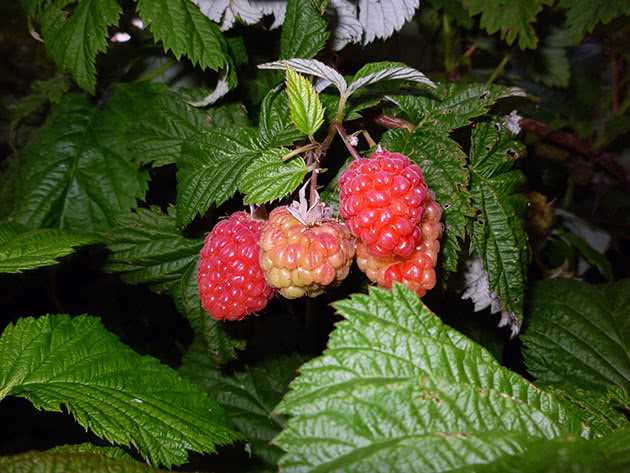
As the raspberry canes grow taller, they may require support to prevent them from bending or breaking under the weight of the fruit. Install a trellis or a wire system to provide support for the canes. This will ensure that the plants grow upright and that the fruit remains off the ground, reducing the risk of rot and pest damage.
By following these spring care practices, you can promote the healthy growth and development of your remontant raspberries. With proper care, you can look forward to a bumper crop of delicious raspberries later in the season.
Benefits of Proper Spring Care
- Increased fruit production: By providing proper care in the spring, remontant raspberries can produce a larger yield of delicious berries. This is because they are given the necessary nutrients and conditions to thrive.
- Longer fruiting season: Remontant raspberries have the unique ability to produce fruit twice in a growing season. By caring for them properly in the spring, you can extend the fruiting period and enjoy fresh raspberries for longer.
- Healthy plant growth: Spring care involves feeding the plants and providing them with the necessary nutrients. This promotes healthy growth, ensuring that the raspberries are strong and can resist diseases and pests.
- Prevention of diseases: Proper care in the spring can help prevent the occurrence of diseases in remontant raspberries. By removing any diseased or damaged plant parts and practicing good hygiene, you can reduce the risk of infections.
- Protection from frost: Spring care also involves covering the plants to protect them from late frosts. By providing this protection, you can prevent damage to the new growth and ensure a successful fruiting season.
- Overall plant health: When remontant raspberries receive proper care in the spring, their overall health improves. This leads to stronger, more productive plants and a healthier garden environment.
In conclusion, providing proper care for remontant raspberries in the spring offers numerous benefits. It increases fruit production, prolongs the fruiting season, promotes healthy plant growth, prevents diseases, protects from frost, and improves the overall health of the plants. By dedicating time and effort to spring care, you can enjoy abundant and delicious raspberries throughout the growing season.
Feeding Remontant Raspberries in Spring
Feeding remontant raspberries in the spring is an important step in ensuring healthy growth and a bountiful harvest. Here are some tips on how to properly feed your remontant raspberries:
1. Organic Matter
- In early spring, apply a generous layer of organic matter around the base of the raspberry plants. This can include well-rotted manure, compost, or leaf mold.
- Organic matter helps improve the soil structure, retain moisture, and provide essential nutrients to the plants.
2. Nitrogen-Rich Fertilizer
- After the organic matter has been applied, sprinkle a nitrogen-rich fertilizer around the plants.
- Nitrogen is essential for plant growth and helps promote healthy leaf and stem development.
- Be sure to follow the instructions on the fertilizer package for proper application rates.
3. Balanced Fertilizer
- Once the raspberry plants begin to show new growth, switch to a balanced fertilizer that contains equal amounts of nitrogen, phosphorus, and potassium.
- This type of fertilizer will provide the necessary nutrients for both vegetative growth and fruit production.
- Again, follow the instructions on the fertilizer package for proper application rates.
4. Mulching
- After fertilizing, apply a layer of organic mulch around the base of the plants.
- Mulching helps suppress weed growth, retain moisture, and regulate soil temperature.
- Use materials such as straw, wood chips, or shredded leaves as mulch.
5. Watering
- Proper watering is crucial for the health of remontant raspberries.
- Keep the soil evenly moist, especially during dry periods.
- Aim to provide around 1-2 inches of water per week.
By following these feeding tips, you can ensure that your remontant raspberries receive the nutrients they need to thrive and produce a plentiful harvest.
Choosing the Right Fertilizer
When it comes to feeding remontant raspberries in the spring, choosing the right fertilizer is crucial. The right balance of nutrients can help promote healthy growth and abundant fruit production. Here are some factors to consider when selecting a fertilizer for your remontant raspberries:
1. Nitrogen Content
Nitrogen is an essential nutrient for plant growth, as it helps with the development of leaves and stems. When choosing a fertilizer, look for one with a higher nitrogen content. This will provide your raspberries with the necessary nutrients to grow vigorously in the spring.
2. Phosphorus and Potassium Content
While nitrogen is important, it’s also essential to consider the phosphorus and potassium content in the fertilizer. Phosphorus helps promote root development and fruit production, while potassium aids in overall plant health and disease resistance. Look for a balanced fertilizer that contains adequate amounts of phosphorus and potassium.
3. Slow-Release Formulas
Consider using a slow-release fertilizer for your remontant raspberries. Slow-release formulas provide a steady supply of nutrients over a longer period of time, reducing the risk of nutrient burn and ensuring your raspberries are consistently fed throughout the growing season.
4. Organic vs. Synthetic
You have the option to choose between organic and synthetic fertilizers. Organic fertilizers are derived from natural sources and provide slow-release nutrients. They also improve soil structure and fertility over time. Synthetic fertilizers, on the other hand, provide a quick nutrient boost but may have a higher risk of nutrient runoff. Consider your personal preferences and the specific needs of your remontant raspberries when deciding between organic and synthetic fertilizers.
5. Soil Testing
Before applying any fertilizer, it’s a good idea to conduct a soil test. This will help you determine the current nutrient levels in your soil and identify any deficiencies or imbalances. Based on the results, you can choose a fertilizer that will address the specific needs of your remontant raspberries.
6. Application Rate and Frequency
Lastly, make sure to follow the recommended application rate and frequency specified on the fertilizer packaging. Over-fertilizing can lead to nutrient imbalances and damage the plants, while under-fertilizing may result in poor growth and low fruit production. It’s important to find the right balance to ensure your remontant raspberries receive optimal nutrition.
Conclusion
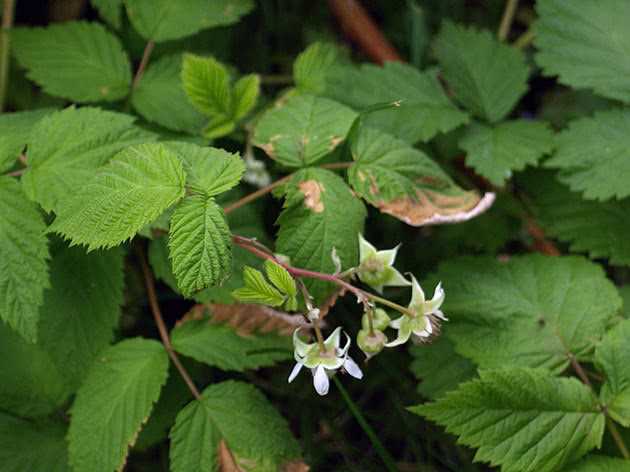
By considering the nitrogen content, phosphorus and potassium content, slow-release formulas, organic vs. synthetic options, soil testing, and proper application rate and frequency, you can choose the right fertilizer for your remontant raspberries. Providing your plants with the necessary nutrients will help them thrive and produce a bountiful harvest.
Applying Fertilizer Correctly
Proper fertilization is crucial for the health and productivity of remontant raspberries. By providing the necessary nutrients, you can ensure your plants grow vigorously and produce a bountiful harvest. Here are some guidelines for applying fertilizer correctly:
1. Timing
Fertilizer should be applied during the spring before new growth begins. This is usually around mid to late March, depending on your climate. Applying it too early can result in nutrient runoff, while applying it too late may not provide sufficient nutrition for the plants.
2. Type of Fertilizer
Use a balanced fertilizer with an N-P-K ratio of around 10-10-10 or 14-14-14. This means the fertilizer contains equal amounts of nitrogen (N), phosphorus (P), and potassium (K). These nutrients are essential for plant growth and development.
3. Amount
The amount of fertilizer to apply depends on the size of your raspberry patch. As a general guideline, spread 1 to 2 pounds of fertilizer per 100 square feet of planting area. For individual plants, apply about 2 tablespoons of fertilizer around the base of each plant.
4. Application Method
Scatter the fertilizer evenly over the soil surface, avoiding direct contact with the plant stems. Lightly incorporate the fertilizer into the top inch of soil using a garden rake or hoe. Water the area thoroughly after application to help the nutrients penetrate the soil.
5. Repeat Application
After the initial spring application, you can apply a second round of fertilizer in early summer to promote continuous growth and fruit production. Follow the same guidelines for application as mentioned above.
Remember to always read and follow the instructions on the fertilizer packaging. Over-fertilization can harm the plants, so it’s important to use the correct amount and apply it at the right time. By properly fertilizing your remontant raspberries, you’ll be rewarded with healthy plants and an abundant harvest.
Covering Remontant Raspberries in Spring
Remontant raspberries, also known as everbearing raspberries, are a type of raspberry that produces fruit twice in a year. In order to protect them from frost and other adverse weather conditions, it is important to cover them in spring.
Why Cover Remontant Raspberries?
Covering remontant raspberries in spring serves several purposes:
- Protection from frost: Spring frost can damage the tender new growth of remontant raspberries, potentially leading to reduced berry production.
- Protection from pests: Covering the plants can help deter pests, such as birds and rabbits, from feasting on the newly emerging buds and berries.
- Promotion of early growth: By providing a warmer microclimate, covering remontant raspberries in spring can help promote earlier growth and fruiting.
How to Cover Remontant Raspberries in Spring
- Wait for favorable weather conditions: Before covering your remontant raspberries, make sure there are no signs of frost or extreme cold temperatures.
- Choose a suitable covering material: Use materials such as frost blankets, row covers, or burlap to cover the plants. These materials help protect against frost while still allowing air and moisture to circulate.
- Secure the covering: Make sure the covering material is firmly secured to prevent it from blowing away in strong winds. Use stakes or clips to hold it in place.
- Remove the covering during the day: If the weather conditions improve and temperatures rise, remove the covering during the day to allow the plants to receive sunlight and fresh air.
- Monitor the plants: Keep an eye on the weather forecast and adjust the covering as needed. Remove the covering completely once the risk of frost has passed.
Additional Tips
Here are some additional tips to keep in mind when covering remontant raspberries in spring:
- Do not cover the plants too early in the season, as this can delay growth and fruiting.
- Avoid using materials that can trap excessive moisture, as this can lead to fungal diseases.
- Ensure the covering material is not touching the plants directly, as this can cause damage.
- Regularly check the plants for any signs of pests or diseases, even when covered.
By taking proper care and covering remontant raspberries in spring, you can help ensure a successful and fruitful growing season for these delicious berries.
Why Cover Remontant Raspberries
Covering remontant raspberries is an important practice for their care and protection. By providing a cover for the plants, you can protect them from various adverse conditions and ensure their healthy growth and productivity.
Protection from Frost
One of the main reasons to cover remontant raspberries is to protect them from frost. Late spring frost can be damaging to the tender raspberry shoots, buds, and fruits. By covering the plants with a suitable material, such as straw or horticultural fleece, you can create a protective barrier against frost. This helps to prevent freezing of the plant tissues and ensures their survival and future growth.
Protection from Pests
Another reason to cover remontant raspberries is to protect them from pests. Raspberry plants are prone to attacks by various pests, such as aphids, beetles, and worms. By providing a physical barrier through covering, you can prevent these pests from reaching the plants and causing damage. Additionally, covering can also deter birds and other animals from feeding on the raspberry plants and their fruits.
Protection from Extreme Weather
Covering remontant raspberries can also protect them from extreme weather conditions. In hot and dry weather, covering can help to retain moisture around the plants and prevent them from drying out. On the other hand, during heavy rains or storms, covering can provide some shelter and prevent the plants from being battered by strong winds or heavy rainfall.
Prevention of Disease Spread
Covering remontant raspberries can also help in preventing the spread of diseases. Some fungal diseases, such as raspberry leaf spot or powdery mildew, can be easily spread through splashing rain or wind. By covering the plants, you can minimize the contact between the leaves and external sources of infection, reducing the risk of disease spread.
Prolonged Harvest
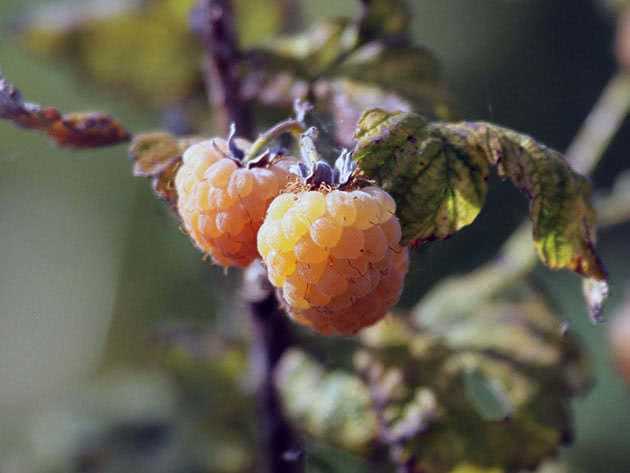
Covering remontant raspberries can also extend the harvest period. By protecting the plants from adverse conditions, you can ensure that they remain healthy and productive for a longer period. This allows for a continuous supply of ripe and delicious raspberries throughout the growing season.
In conclusion, covering remontant raspberries is a beneficial practice for their care and protection. It helps to protect the plants from frost, pests, extreme weather, disease spread, and also prolongs the harvest period. By providing a cover, you can ensure the healthy growth and productivity of your remontant raspberry plants.
Types of Covers for Protection
Remontant raspberries are delicate plants that require protection from harsh weather conditions and pest attacks. There are various types of covers that can be used to provide this protection. Here are some common types:
1. Row Covers
Row covers are a popular choice for protecting remontant raspberries. They are made of lightweight, translucent fabric that allows sunlight to reach the plants while providing a barrier against pests and extreme temperatures. Row covers can be installed over a row of plants using hoops or stakes to create a tunnel-like structure.
2. Garden Fleece
Garden fleece is a lightweight and breathable material that can be used to cover remontant raspberries. It helps to retain heat and prevent frost damage during cold weather. Garden fleece can be draped over the plants and secured with pins or clips.
3. Polyethylene Film
Polyethylene film is a durable and waterproof material that can be used to create a greenhouse-like environment for remontant raspberries. It can be used to cover individual plants or entire rows. Polyethylene film can be attached to frames or supports to create a structure that protects the plants from harsh weather conditions.
4. Netting
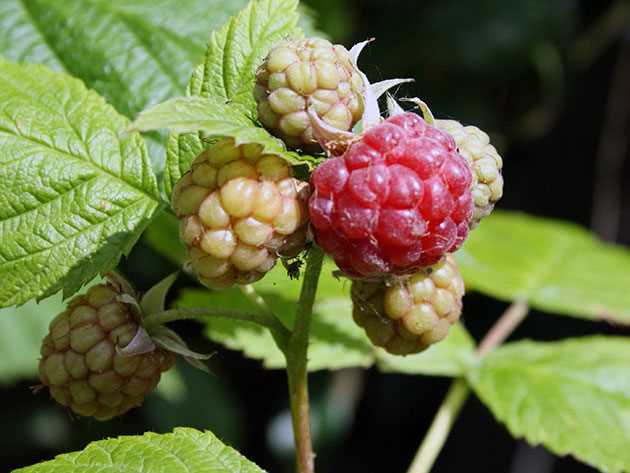
Netting is commonly used to protect remontant raspberries from bird and insect damage. It is available in different mesh sizes, allowing for the passage of air, sunlight, and water while keeping pests at bay. Netting can be draped over the plants or secured with stakes or hoops.
5. Plastic Cloche
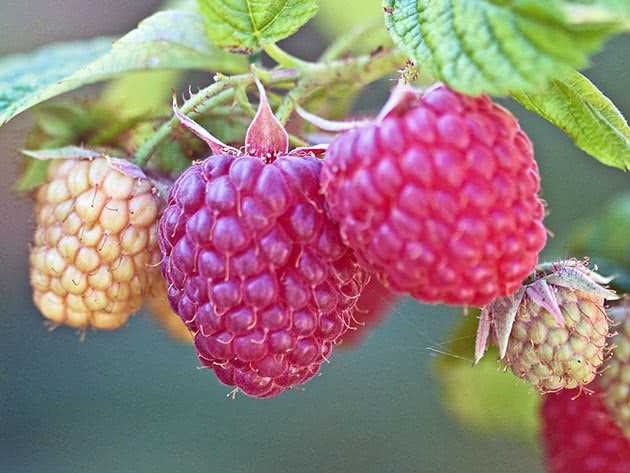
A plastic cloche is a small, domed structure that can be used to protect individual remontant raspberry plants. It is made of transparent plastic and provides a microclimate for the plant, protecting it from cold temperatures and pests. Plastic cloches can be placed over the plants and secured with stakes or clips.
When choosing a cover for your remontant raspberries, consider the specific needs of your plants and the prevailing weather conditions in your area. It is important to select a cover that provides adequate protection while still allowing for airflow and sunlight.
Protection of Remontant Raspberries from Pests
Remontant raspberries are susceptible to various pests that can damage the plants and hinder their growth. It is important to take preventive measures to protect the raspberry bushes from these pests.
1. Aphids
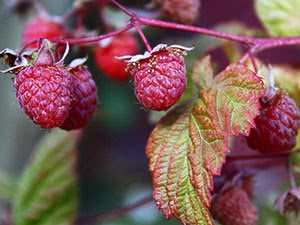
Aphids are small insects that feed on the sap of raspberry plants. They can cause stunted growth, curling of leaves, and the spreading of plant diseases. To protect your remontant raspberries from aphids:
- Regularly inspect the plants for aphid infestations.
- If aphids are present, you can wash them off with a strong stream of water or use insecticidal soap.
- Encourage natural predators such as ladybugs and lacewings, which feed on aphids.
2. Spider Mites
Spider mites are tiny pests that can cause yellowing leaves, loss of vigor, and webs on the raspberry plants. To protect your remontant raspberries from spider mites:
- Regularly check the undersides of leaves for spider mites.
- If spider mites are present, you can use insecticidal soap or natural predators such as predatory mites.
- Keep your raspberry plants well-watered to prevent spider mite infestations.
3. Raspberry Crown Borers
Raspberry crown borers are insects that bore into the canes and crowns of raspberry plants, causing wilting, dieback, and plant death. To protect your remontant raspberries from crown borers:
- Regularly inspect the canes for signs of borers such as wilting or holes.
- If crown borers are present, prune and destroy the affected canes.
- Plant resistant varieties of remontant raspberries.
4. Raspberry Fruitworms
Raspberry fruitworms are larvae that feed on the fruit of raspberry plants, causing damage and reducing fruit quality. To protect your remontant raspberries from fruitworms:
- Inspect the fruit for signs of fruitworm infestation.
- If fruitworms are present, you can apply insecticides or use pheromone traps.
- Remove and destroy infested fruit to prevent further damage.
By taking these preventive measures, you can effectively protect your remontant raspberries from common pests and ensure healthy growth and abundant harvest.
Common Pests to Watch Out For
- Aphids: These small insects suck sap from the leaves and stems of the raspberry plant, causing the leaves to curl and distort. They can be controlled by spraying with a solution of soapy water or using insecticidal soap.
- Spider Mites: These tiny pests can cause yellow or bronzed leaves and fine webbing on the undersides of the leaves. Regular spraying with water can help control spider mites, or you can use an insecticidal soap or horticultural oil.
- Raspberry Fruitworms: These pests lay eggs on the fruit, resulting in damage and berry deformation. Applying an approved insecticide can help control raspberry fruitworms.
- Japanese Beetles: These beetles feed on raspberry leaves, resulting in skeletonized leaves. Handpicking the beetles is an option, or you can use a botanical insecticide for control.
- Leafhoppers: Leafhoppers can transmit viruses to raspberry plants, causing stunted growth and yellowing leaves. Removing weeds and using insecticides can help manage leafhoppers.
- Cane Borers: These pests tunnel into the raspberry canes, causing wilting and dieback. Pruning and destroying infested canes can help control cane borers.
- Crown Borers: Crown borers tunnel into the crown of the raspberry plant, resulting in wilting and death. Regular inspection and removal of infested plants can help manage crown borers.
Question-answer:
When is the best time to start feeding remontant raspberries in spring?
The best time to start feeding remontant raspberries in spring is after the danger of frost has passed and the plants have started to show new growth.
What kind of fertilizer is best for feeding remontant raspberries in spring?
A balanced fertilizer, such as a 10-10-10 or 14-14-14, is ideal for feeding remontant raspberries in spring. It provides the necessary nutrients for the plants to grow and produce healthy fruits.
Why is it important to cover remontant raspberries in spring?
It is important to cover remontant raspberries in spring to protect them from late frosts or cold temperatures. These can damage the plants and affect their growth and fruit production.
What materials can be used to cover remontant raspberries in spring?
Various materials can be used to cover remontant raspberries in spring, such as row covers, frost blankets, or even plastic sheets. The chosen material should be lightweight, breathable, and provide sufficient protection against cold weather.
How can I protect remontant raspberries from pests in spring?
To protect remontant raspberries from pests in spring, it is recommended to use organic insecticides or insecticidal soap. Regularly inspect the plants for signs of pests or diseases and take proactive measures to prevent infestations, such as removing diseased leaves or using floating row covers.







